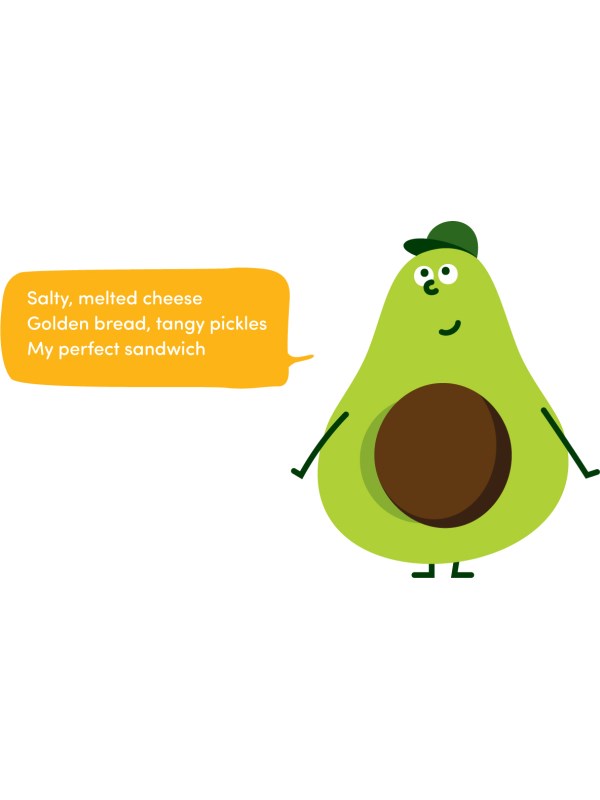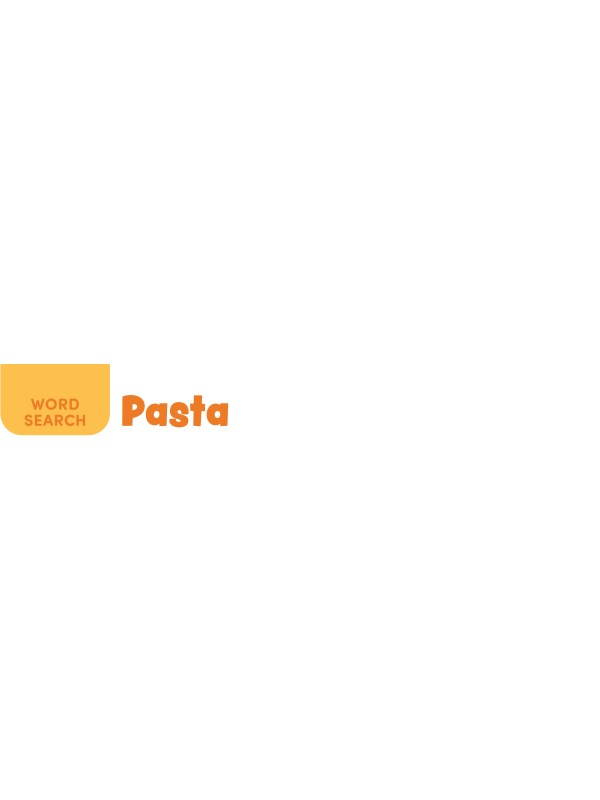
Mitsy’s Silly Stories: Road Trip
Mitsy’s Silly Stories: Holiday Adventure
Spot the Differences: In the Test Kitchen
Would You Rather? Desert Island
How to Draw: Doughnuts, Tacos, Ice Cream, & Pies
Trivia: Ingredient Investigation
Drawing Time: Your Dream Dinner

Can you find these 10 pasta-rific words hidden in the puzzle? Look for them across, down, and diagonally!

| SPAGHETTI | BUCATINI | FARFALLE | RIGATONI | ORZO |
| LINGUINE | ZITI | FUSILLI | PENNE | ELBOWS |
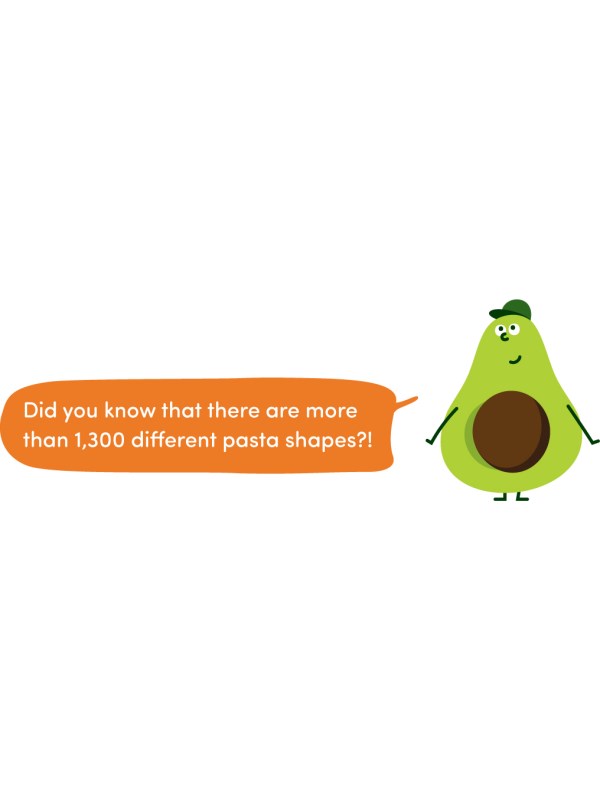

Start your morning right and find these 12 breakfast-y words hidden in the puzzle. Look for them across, down, and diagonally!

| PANCAKES | EGGS | JUICE | DOUGHNUTS |
| WAFFLES | TOAST | BACON | YOGURT |
| CEREAL | OATMEAL | SAUSAGE | SMOOTHIE |


Use your eyes (handy tools built into your own head!) to find the 12 kitchen tools hidden in this puzzle. Look for them across, down, and diagonally!

| WHISK | KNIFE | LADLE |
| SPATULA | TONGS | BOWL |
| SKILLET | COLANDER | SAUCEPAN |
| MIXER | GRATER | SPOON |
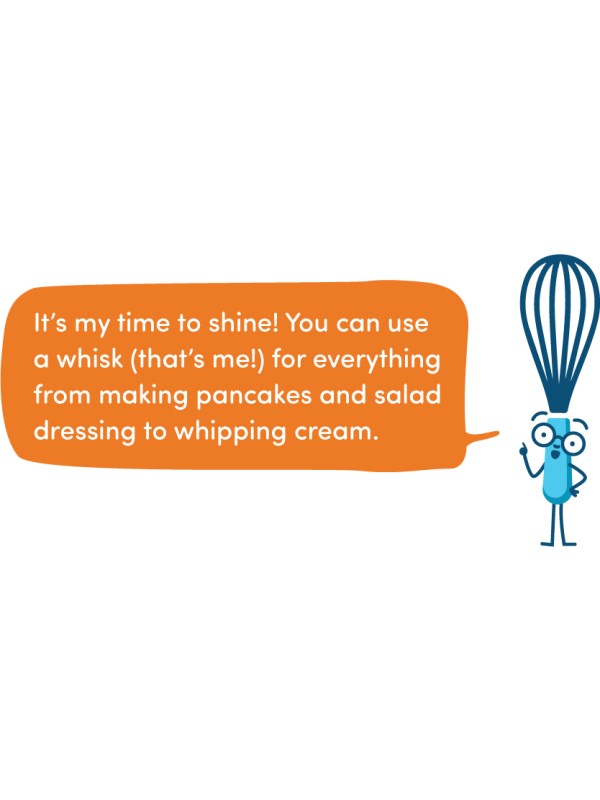

Can you unscramble the letters in these jumbled words to reveal the names of 12 delicious cookies?


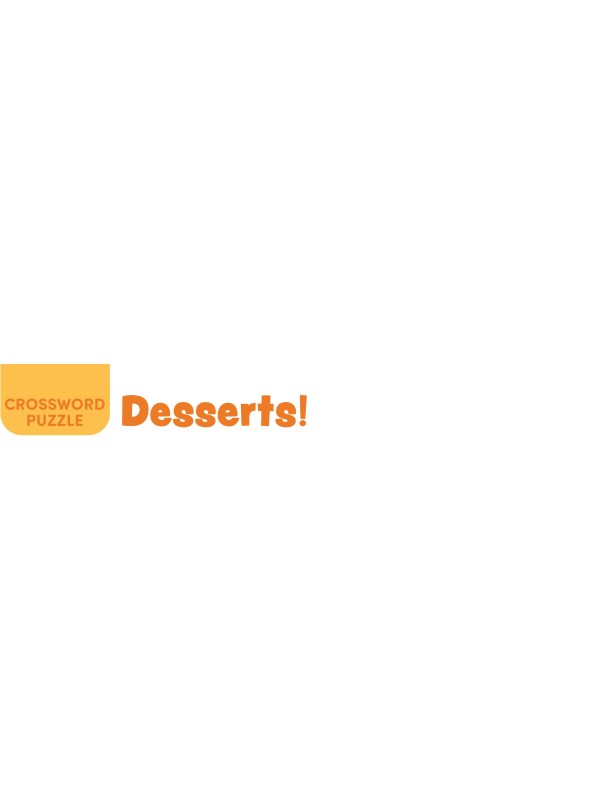
Exercise your mind with this dessert-centric crossword puzzle.

CROSSWORD TIPS!
• You don’t need to solve this puzzle in order—read through all the clues and start with the ones that are easiest for you.
• It can be fun to solve crossword puzzles with friends or family (plus, more people = more brain power!).
• Finally, crossword puzzle clues are not always straightforward—don’t hesitate to think outside the box.
ACROSS
2 A “berry” delicious summertime dessert
3 A young Girl Scout or a chocolaty treat
5 A weighty dessert?
7 Pucker up for these bright yellow squares
9 An English person might think this fall dessert is made of potato chips
12 A famous New York essert
DOWN
1 Milk’s best friend
4 We all “scream” for it
6 A treat you can only enjoy on the weekend?
8 It’s as easy as
10 A cold, fruity treat in the summertime
11 You might share them at a birthday party

First, ask your friends or family to come up with words to fill the blank spaces in this story. (Don’t read the story out loud yet!) Write their words in the blank spaces. Encourage everyone to be as silly and creative as they can! After you’ve filled in all the blanks, read the (now very silly!) story out loud.
Parts of Speech:
NOUN
A word (such as sibling, cafe, or sandwich) for a person, place, or thing
ADJECTIVE
A word (such as sparkly, crispy, or tall) that describes a noun
VERB
A word (such as jump, eat, or chop) used to describe an action
PAST-TENSE VERB
A word (such as jumped, ate, or chopped) used to describe an action that has already happened
Mitsy was just about done packing for her annual road trip, and she could not have been more excited. It was another (Adjective) day of summer vacation, her favorite time of year to put the (Noun) to the (Noun) and explore the open (Noun), as the saying goes. But Mitsy had to make sure she’d packed everything she and her friends would need before they set out on this year’s (Adjective) adventure!
She had packed plenty of (Food Item) in case they got hungry along the way. And she remembered to bring a (Noun) in case they got bored. She even had her favorite stuffed (Noun) in case she got homesick. But what was she forgetting? THE MAP!
Mitsy had planned the most (Adjective) road trip, and she had every stop laid out on that map. She couldn’t (Verb) without it! Good thing she remembered putting it behind the (Noun) in the recipe lab fridge, which is where she keeps all her most (Adjective) possessions.
They were going to start by visiting ’s (Person in Room) Castle, the largest structure made out of (Noun) on this continent. Then they’d (Verb) south to see the world’s -est (Adjective) ball of (Noun), which may as well have been the eighth Wonder of the World. After that, they’d drive past the (Adjective) Canyon on the way to -wood (Adjective) Forest and stop for tea and (Plural Noun) at Queen Victoria’s (Noun) before they reached the coast.
Misty loved the coast the most. She couldn’t wait to lay out a beach towel, (Verb) a (Noun) back and forth with her friends, and watch the sunset across the (Adjective) water. She could almost taste the (Plural Noun) they’d roast on the campfire. BUT, first things first! Mitsy went to go pack the map.
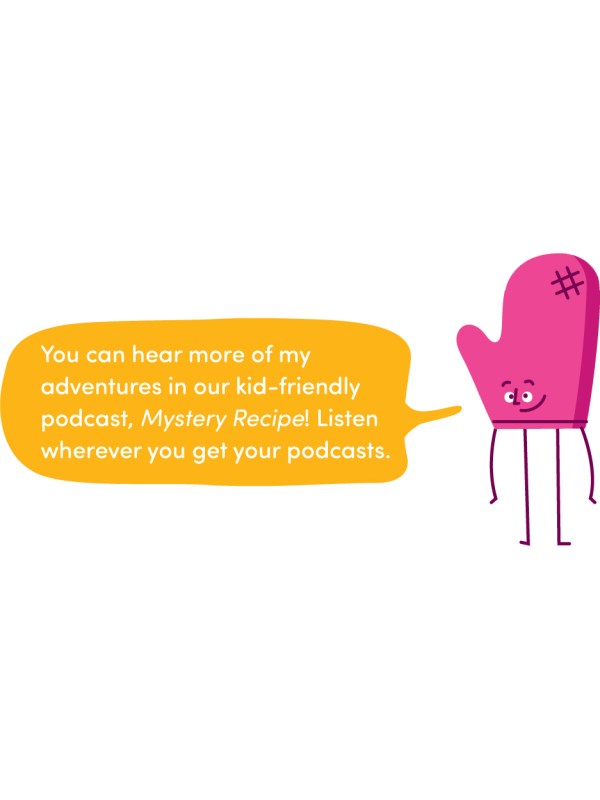

First, ask your friends or family to come up with words to fill the blank spaces in this story. Write their words in the blank spaces. Encourage everyone to be as silly and creative as they can! After you’ve filled in all the blanks, read the (now very silly!) story out loud. (See this page for definitions of the parts of speech.)
“HAPPY NATIONAL HAND-HOLDING DAY!” Mitsy sang out as she (Past Tense Verb) down the stair’s handrail and into the recipe lab.
“Might I enlighten you with a (Adjective) history of National Hand-Holding Day while we (Verb) our customary breakfast bagels?” she asked her friends.
“It all started (Number) years ago, in a town just outside of (Place). It was a (Adjective) summer day, and our hero, the baker, was busy doing what they did every day: making bagels for their town to enjoy for breakfast. They had a (Adjective) oven outside of their home, and this morning they were really in the groove. They’d (Verb) and (Verb) each bagel and, with a flick of the wrist, into the oven they’d go. Finally, all the bagels were in the oven. The baker was waiting for the (Adjective) bagels to bake, but they were getting bored, so they’d balance their spatula on their finger and flip it up into the air. But then they threw the spatula a bit too high! A seagull, flying past and thinking they’d spotted a (Adjective) morning snack, (Past Tense Verb) down, grabbed the spatula, and flew away.
The bagels were almost ready and the entire town was (Adjective) and lining up for food. How would the baker get the bagels out of the oven?! They couldn’t just (Verb) in and grab the tray—it was too hot!
“I have a (Adjective) idea,” said a voice behind the baker.
The baker turned around to see…their warm winter mittens?
“Mittens!” the baker shouted with (Emotion). “It’s the middle of summer, and these bagels are about to (Verb) ! This is no time for you!”
“Well, in the (Adjective) winter I may keep your (Plural Noun) warm, this is true, but perhaps I can protect your hands from the heat of the oven today.”
And on that day, the oven mitt was born. It took a few (Adjective) years to get the type of mitt you know and love today, but every year, on the hottest day of summer, we wear our winter mittens and eat bagels to celebrate that (Adjective) first mitt’s willingness to hold a hand.
Happy National Hand-Holding Day, everyone!
You can hear more of Mitsy’s adventures in our kid-friendly podcast, Mystery Recipe! Listen wherever you get your podcasts.
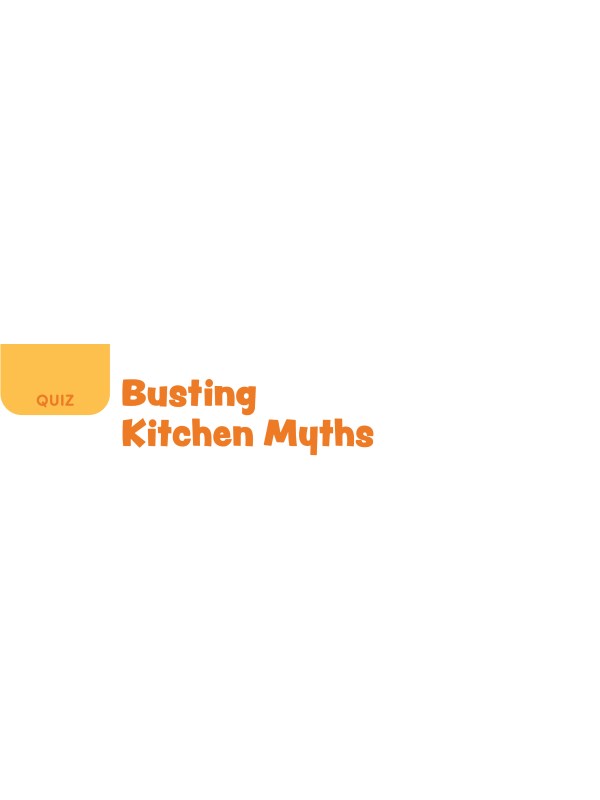
Some cooking tips have been passed down for generations—but that doesn’t necessarily mean that they’re true. Many of these tips don’t actually work. They might sound like “facts,” but science tells us that they are myths. (We’ve tested them all out!) Can you figure out which statements are facts and which are myths?
1  MYTH or
MYTH or  FACT
FACT
Covering your pot will make the water boil faster.
2  MYTH or
MYTH or  FACT
FACT
Slamming the oven door or stomping your feet in the kitchen while a cake is baking will cause your cake to sink disastrously in the middle.
3  MYTH or
MYTH or  FACT
FACT
You should never wash fresh mushrooms.
4  MYTH or
MYTH or  FACT
FACT
Adding oil to pasta cooking water will keep the pasta from sticking.
5  MYTH or
MYTH or  FACT
FACT
Searing a steak in a pan over high heat is the best way to seal in its delicious juices.
6  MYTH or
MYTH or  FACT
FACT
You can regrow scallions by putting the roots in a glass of water, even if you’ve used up the green parts.

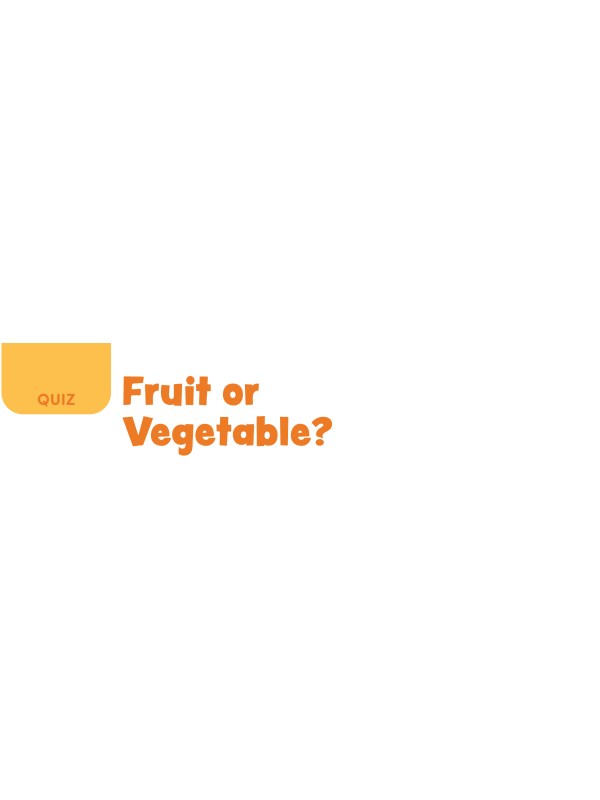
Is a tomato a fruit or a vegetable? The answer might surprise you. We often call tomatoes vegetables because they’re eaten in savory dishes. But if you think about it from the perspective of the tomato plant, a tomato is most definitely a FRUIT.

Fruits form from a flower’s ovary and always contain seeds. They tend to be juicy and sweet so that animals want to eat them, and then the animals spread the seeds through—you guessed it—their poop. Vegetables, on the other hand, are all the other parts of a plant that we eat, such as the leaves, stems, roots, and even the flowers! Now that you’ve got the scoop on fruit, see if you can figure out whether each of these foods is a fruit or a vegetable. Lettuce begin!

1 Avocados
 Fruit
Fruit
 Vegetable
Vegetable

2 Rhubarb
 Fruit
Fruit
 Vegetable
Vegetable

3 Carrots
 Fruit
Fruit
 Vegetable
Vegetable

4 Apricots
 Fruit
Fruit
 Vegetable
Vegetable

5 Lemons
 Fruit
Fruit
 Vegetable
Vegetable

6 Olives
 Fruit
Fruit
 Vegetable
Vegetable

7 Kale
 Fruit
Fruit
 Vegetable
Vegetable

8 Bananas
 Fruit
Fruit
 Vegetable
Vegetable

9 Raspberries
 Fruit
Fruit
 Vegetable
Vegetable

10 Eggplants
 Fruit
Fruit
 Vegetable
Vegetable

11 Broccoli
 Fruit
Fruit
 Vegetable
Vegetable

12 Artichokes
 Fruit
Fruit
 Vegetable
Vegetable

Humans have been making cheese for thousands of years. The process always starts with milk (cow’s milk of course, but also goat’s, sheep’s, buffalo’s, yak’s, and even camel’s milk!). Depending on how cheese is made, it can have many different flavors and textures: hard, soft, smooth, crumbly, creamy, tangy, sweet, nutty, and many more. Grab your suitcase and see if you can figure out which country each of these cheeses comes from.
1 Cheddar cheese is made from cow’s milk and has been around for more than 900 years (!). It was invented in a village called Cheddar in this country, which is also famous for foods such as Yorkshire pudding, fish and chips, and bubble and squeak:
A. Switzerland
B. England
C. Australia
D. Japan
2 Nutty, salty, savory Parmigiano-Reggiano is a hard, dense cheese made from cow’s milk. It is often grated over dishes, such as pasta or risotto. It comes from:
A. Italy
B. Spain
C. India
D. Finland
3 Feta cheese is traditionally made from sheep’s milk and is stored in a salty liquid called a brine. Feta is crumbly and has a salty, tangy flavor. Feta originated in this country, which also created the Olympic games and the Parthenon:
A. Brazil
B. South Korea
C. Morocco
D. Greece
4 Ooh la la! Gooey, buttery Brie (“bree”) is a soft cheese with a firm, white rind and a creamy interior. Brie traditionally hails from this European country:
A. Ireland
B. Croatia
C. France
D. Norway
5 Cotija (“ko-TEE-hah”) is a hard, salty, white cheese made from cow’s milk. Cotija doesn’t really melt—it’s traditionally crumbled on top of dishes, such as tacos, enchiladas, and black beans. It comes from this North American country:
A. Mexico
B. United States
C. Jamaica
D. Canada
6 Paneer (“pah-NEAR”) is what’s known as a fresh cheese—it isn’t aged at all. Paneer has a mild flavor and a slightly chewy texture. It’s often cooked in the cuisine of this Asian country, which has the second-highest population in the world (1.2 billion people) and 22 official languages (the most popular is Hindi).
A. Japan
B. Indonesia
C. India
D. Thailand
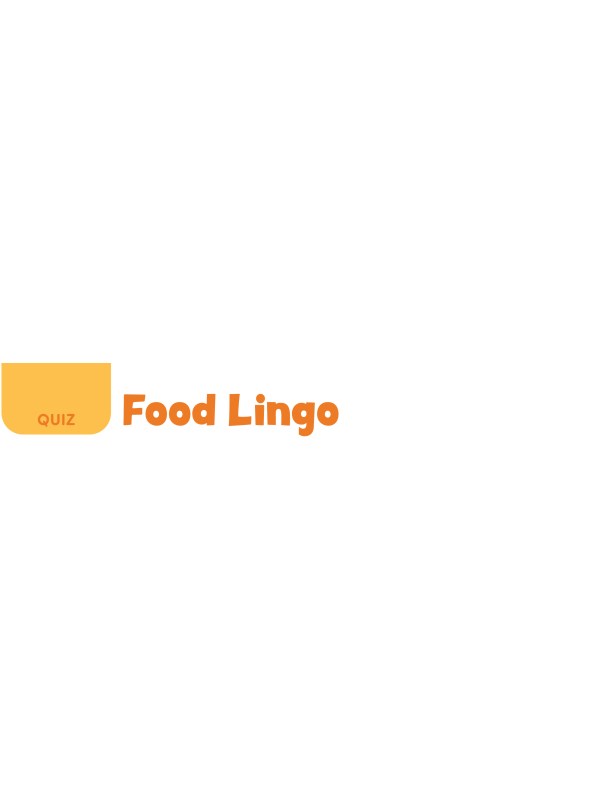
Cooking has its own language. It might seem like a foreign language—but luckily you don’t have to learn too many new words. Can you figure out which cooking word is being described in the definition?

1  SIMMER or
SIMMER or  SAUTÉ
SAUTÉ
To heat a liquid until small bubbles gently break the surface at a variable and infrequent rate.
2  STEAM or
STEAM or  SWEAT
SWEAT
To cook food over gentle heat, in a small amount of fat, in a covered pot.
3  FRY or
FRY or  POACH
POACH
To cook food in hot water or other liquid that is held below the simmering point.
4  BOIL or
BOIL or  BROIL
BROIL
To heat a liquid until large bubbles break the surface at a rapid and constant rate.
5  SEAR or
SEAR or  SCRAMBLE
SCRAMBLE
To cook food over high heat, without moving it in the pan, with the goal of creating a deeply browned crust.
6  SLICE or
SLICE or  DICE
DICE
To cut food into uniform cubes (the exact size depends on the recipe).
7  FOLD or
FOLD or  PEEL
PEEL
To mix delicate batters and incorporate fragile ingredients using a gentle under-and-over motion that minimizes deflation.
8  TOAST or
TOAST or  GRATE
GRATE
To cook or brown food (especially nuts or bread crumbs) using dry heat and without adding fat.
9  KNEAD or
KNEAD or  CHOP
CHOP
To cut food into small pieces (⅛ inch to ¾ inch, depending on the recipe).
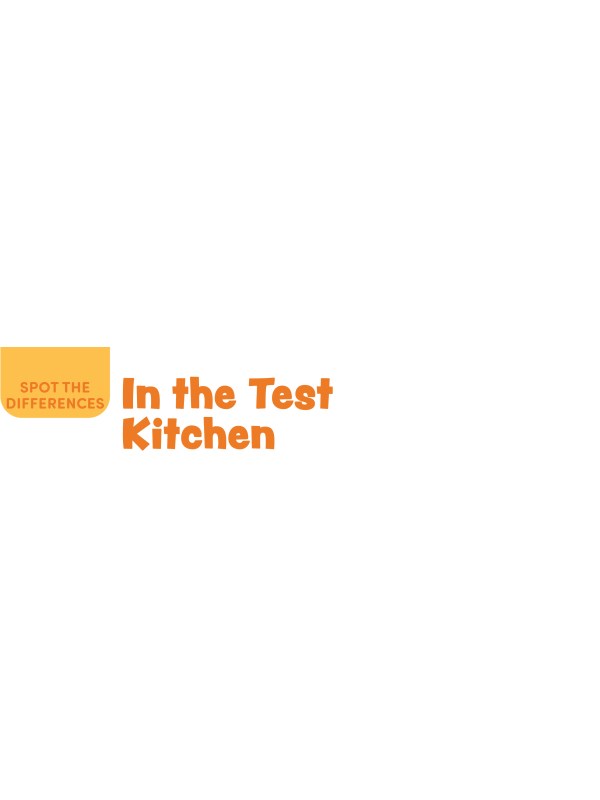
Can you find and circle the 12 differences between these two pictures?!



Imagine: You’re going to go live on a desert island alone for one full month. You won’t be in danger, and you won’t go hungry. But you will have to make some culinary sacrifices. Talk through these decisions with family or friends. Will you make the same—or different—choices?
Would you rather eat ALL fruit or ALL vegetables for the month?
…have only cake or only pie for dessert?
…eat warm ice cream or cold pizza for every meal?
…eat all breakfasts or all dinners?
…bring a skillet or a knife?
…bring a whisk or a rubber spatula?
…have access to salt or hot sauce?
…cook with only an oven or only a grill?
…bring only a spoon or only a fork?
…bring only cookies or only crackers for snacking?
…bring bread or cheese (but not both!)?
You can only bring one DINNER. What will it be?
You can bring one DESSERT. What will it be?
Use this space to write down your top THREE foods to bring to the island.
Use this space to write down your top THREE drinks to bring to the island.
Use this space to write down your top THREE cooking tools to bring to the island.

Condiments aren’t sports teams…but they’re pretty close, right? Use this bracket to pit your favorite condiments against one another. We know, we know, you wouldn’t use all these condiments on the same food. Think of it more like you’re going to go live on that desert island (see left) and can only bring the CHAMPION condiment with you!






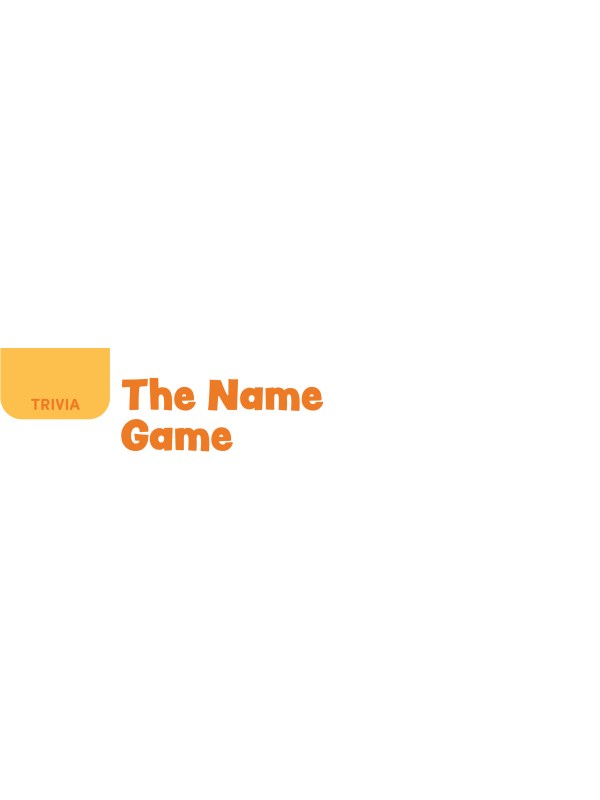
Test your knowledge of food names! Play this trivia game by yourself or with your family or friends.
1 Plum, cherry, and Roma are types of what?
A. Grapes
B. Tomatoes
C. Potatoes
2 Basmati and jasmine are types of what grain?
A. Corn
B. Quinoa
C. Rice
3 Xigua is another name for what fruit?
A. Watermelon
B. Banana
C. Mango
4 What is another name for scallions?
A. Green onions
B. Onion sticks
C. Long onions
5 Snow and sugar snap are types of what vegetable?
A. Corn
B. Lettuce
C. Pea
6 Red, white, and Vidalia are types of what?
A. Onions
B. Apples
C. Peppers
7 Kidney, lima, and pinto are types of what?
A. Greens
B. Beans
C. Pasta
8 Pitaya is another name for what fruit?
A. Dragon fruit
B. Blueberry
C. Cantaloupe
9 Sesame, chia, and flax are all edible what?
A. Grains
B. Nuts
C. Seeds
10 Cobblers and buckles are two types of what?
A. Breakfast cereals
B. Casserole dishes
C. Fruit desserts
11 Farfalle, ziti, and penne are types of what?
A. Pasta
B. Herbs
C. Grains
12 Dried grapes are better known as what?
A. Fruit leather
B. Jerky
C. Raisins
13 Trumpet, enoki, and button are types of what?
A. Beans
B. Squash
C. Mushrooms
14 Nori, kelp, and dulse are types of what?
A. Edible seaweed
B. Kale
C. Herbs
15 What are baby portobello mushrooms called?
A. Shiitake mushrooms
B. Mushettes
C. Cremini mushrooms

What ingredients go into your favorite foods? Play this trivia game by yourself or with your family or friends.
1 What is polenta made from?
A. Bee pollen
B. Ground cornmeal
C. Whole wheat
2 What are most tortilla chips made from?
A. Wheat
B. Rice
C. Corn
3 What is miso made from?
A. Sesame seeds
B. Fermented soybeans
C. Fruit juice
4 What is caramel made from?
A. Melted, browned sugar
B. Thickened cream
C. Heated milk and honey
5 What is tahini made from?
A. Ground-up roasted peanuts
B. Ground-up chickpeas
C. Ground-up toasted sesame seeds
6 What is half-and-half made of?
A. Half milk, half cream
B. Half butter, half milk
C. Half yogurt, half cream
7 Kimchi and sauerkraut are made from what?
A. Onions
B. Cabbage
C. Celery
8 What is the main ingredient in hummus?
A. Potatoes
B. White beans
C. Chickpeas
9 What is cinnamon made from?
A. The petals of a flower
B. The dried berries of a vine plant
C. The bark of a tree
10 What are cheese and yogurt made from?
A. Milk
B. Butter
C. Water
11 What is the main ingredient in mayonnaise?
A. Oil
B. Cream
C. Butter
12 What is butter made from?
A. Oil
B. Cream
C. Cheese
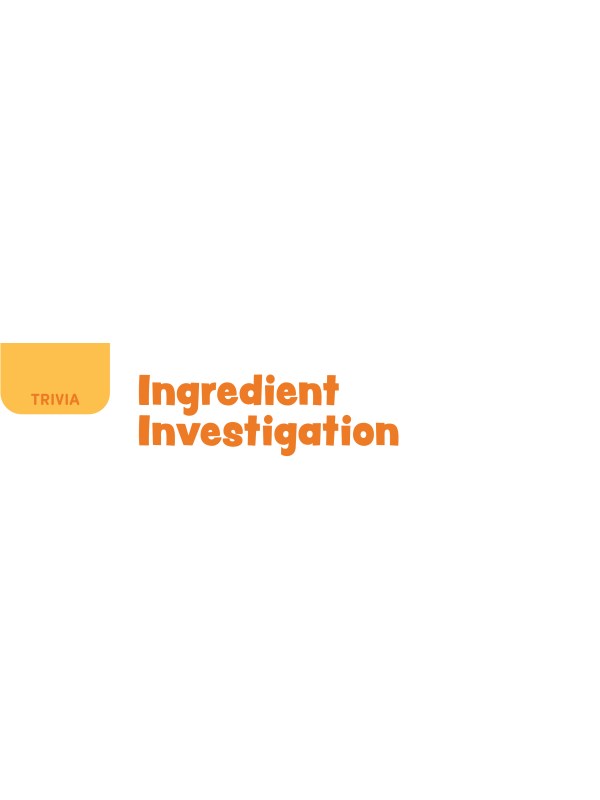
Take a walk through an imaginary grocery store…and answer some trivia along the way. Play this trivia game by yourself or with your family or friends.
1 Pummelo, satsuma, and clementines are types of what?
A. Pumpkins
B. Cheeses
C. Citrus fruits
2 Basil, cilantro, and thyme are types of what?
A. Herbs
B. Fruits
C. Weeds
3 What’s another word for grated citrus peel?
A. Pith
B. Skin
C. Zest
4 What part of the broccoli plant do we eat?
A. The leaves
B. The flower buds
C. The root
5 What are the yellow specks on a strawberry?
A. Seeds
B. Pollen
C. Fungus
6 What vegetable is called “maíz” in Spanish?
A. Beans
B. Corn
C. Peppers
7 Where does black pepper come from?
A. The dried berries of a vine plant
B. The seeds of a tree
C. Dried bell peppers
8 Soba, udon, and ramen are types of what?
A. Noodles
B. Rice
C. Flours
9 Which takes longer to cook?
A. Brown rice
B. White rice
C. They take the same amount of time to cook
10 Peewee, large, and jumbo are sizes of what?
A. Containers of yogurt
B. Blocks of cheese
C. Chicken eggs
11 “Milk” and “dark” are two types of what?
A. Ice cream
B. Chocolate
C. Cheese
12 What makes blue cheese blue?
A. Mold
B. Food coloring
C. Spices
13 Cake, bread, and all-purpose are types of what?
A. Baked goods
B. Desserts
C. Flours
14 What are baking powder and baking soda?
A. Flours
B. Spices
C. Leaveners
15 What is a vanilla bean?
A. The stem of a tropical plant
B. The seed pod of an orchid flower
C. The root of a fruit tree

Close your eyes. Imagine your ideal dinner. It can be anything you want. Steak, potatoes, and green beans? A unicorn cake and cotton candy? Draw it here and label the different parts.

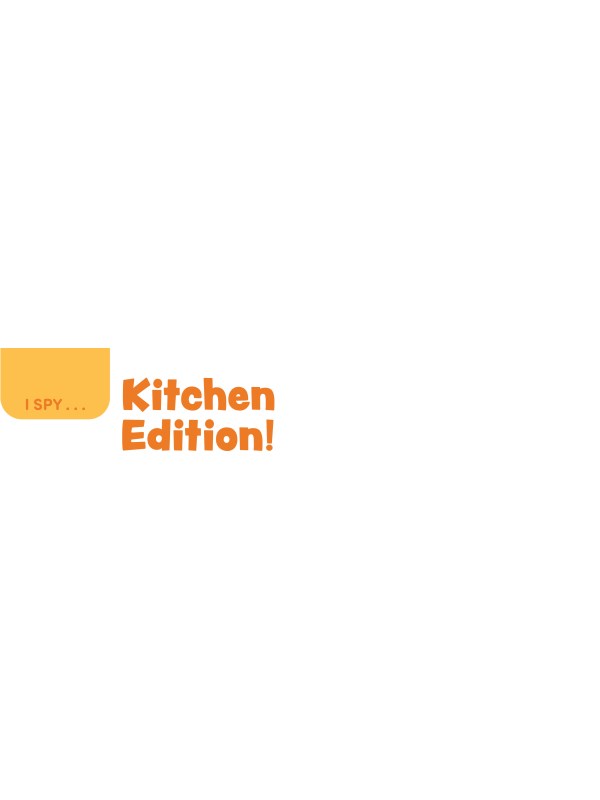
Ready for the best-ever version of I Spy? Take a look around your kitchen—in the pantry, cupboards, drawers, refrigerator, and freezer. Can you find objects, foods, or ingredients that match each of the descriptions below? Write what you find in the blank spaces. You can play this game by yourself or together with family and friends.
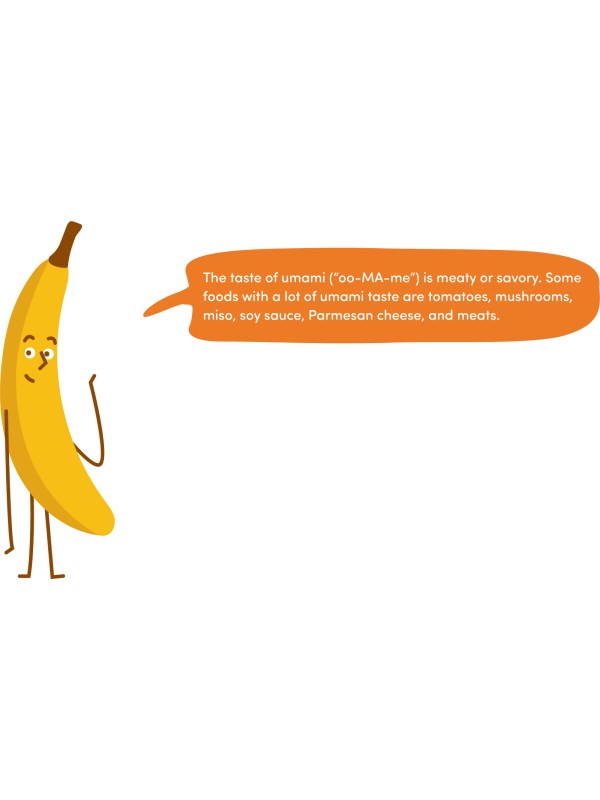


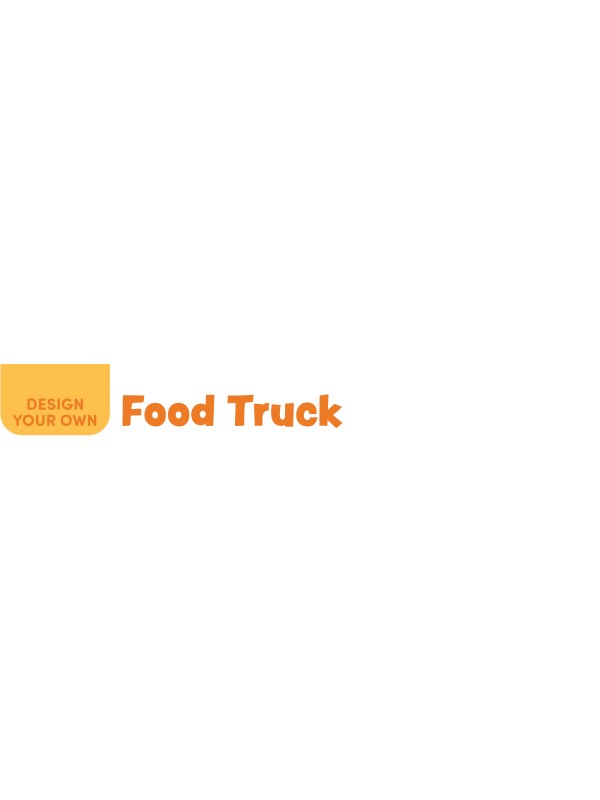
Imagine that you’re a chef about to open your own food truck. What would you call it? Would it have a theme? What would you put on the menu? Use the space below to capture your creative, delicious ideas!
What will you name your food truck?
Draw your food truck logo here.
A logo is a picture or design that represents your food truck.
What will your food truck look like? What color will it be? Will you have a menu on the outside? Tables nearby for people to sit at? Draw and color your ideas below.

Make Your Menu
What will you serve from your food truck? How many different dishes will you have on the menu? Write them in the menu template below.
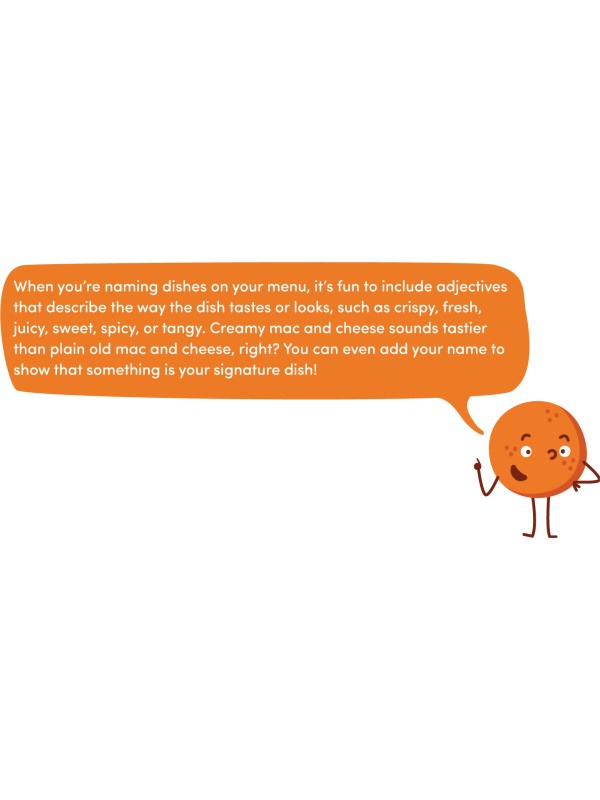

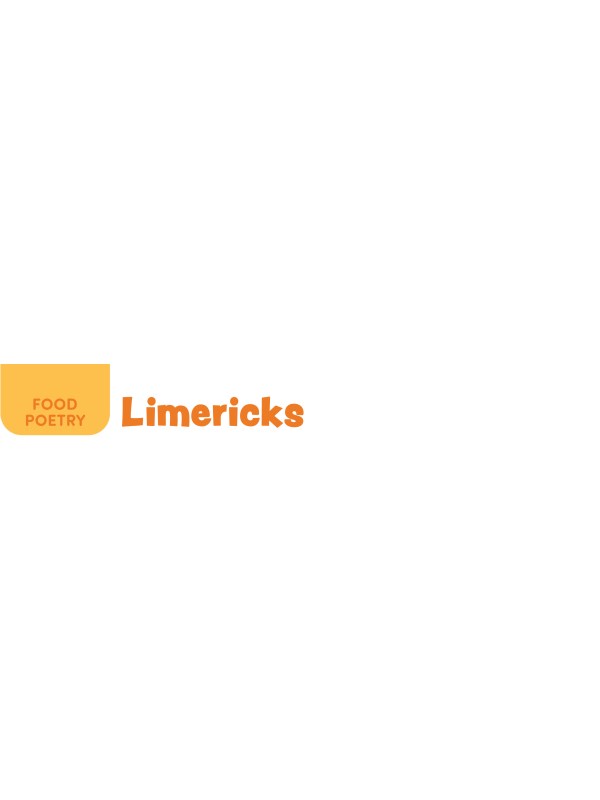
Poetry is a form of writing that makes you feel something through carefully chosen words. You can write a rhyming poem (or not), a funny poem, a love poem, or…a poem about your favorite food! Even though you can write poetry without any set structure (that’s called free verse poetry), sometimes it’s helpful to have some guidelines. Use this space to create your own limerick about your favorite foods.
A limerick is five lines long, and usually silly. The first, second, and fifth lines all rhyme, and each line should contain 7 to 10 syllables. The third and fourth lines also rhyme and should contain 5 to 7 syllables. Here’s an example:
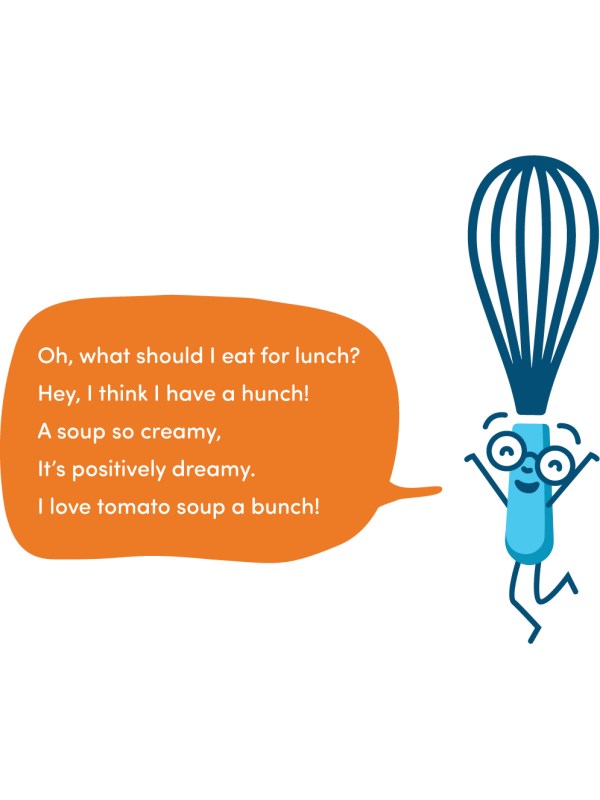

Use this page to write a haiku about a food that you love. A haiku is a traditional Japanese poem, and it is three lines long. The whole poem has only 17 syllables. The first and third lines both have 5 syllables, and the second line has 7 syllables. Because they are so short, haiku poems are all about keeping it simple but powerful. Think hard about which words you choose. What are the best descriptive words you can think of? Is your haiku describing the food itself or is it describing the way a certain food makes you feel? Here’s an example:
